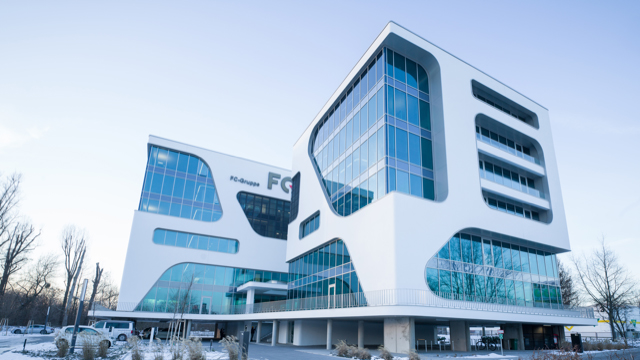
Game-Changing, Intelligent Façade for 3deluxe’s New Building
In recent years much has been said about smart cities and smart buildings but people rarely understand what the label can actually mean in real terms. Together with the client FC Ingenieure in Karlsruhe and the technology company Merck, the architects at 3deluxe have succeeded in coming up with an attractive building ensemble with an interesting, innovative glass façade, which adds a fascinating new facet to intelligent architecture.
The trend in recent years towards cutting the expanses of windows in new buildings in order to save energy conflicts with people’s desire for bright, cheerful rooms flooded with light – and does not, therefore, represent real progress. Extensive glazing and the corresponding effect this has on the way people relate to their environment is an emotionally important aspect of well-being and thus always a significant factor in 3deluxe’s building concepts. Accordingly, intelligent glass is not only durable and efficient but also helpful in the innovative design of people-friendly architecture and one of the many technological innovations that will be necessary for planning smart cities in the future.
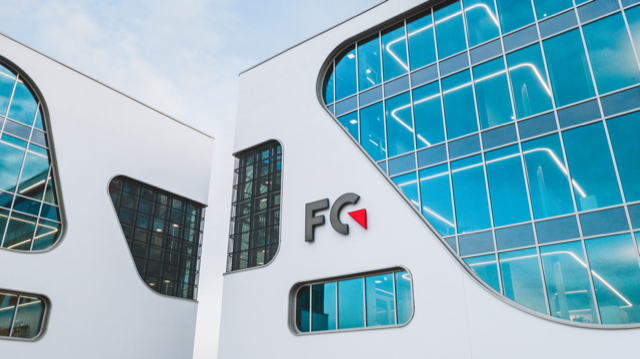
The Building’s Inner Workings: Smart, Digital, Convenient
The office stories have a generous, open concept used largely rejects the idea of internal walls. The structure of the building invites a cooperative, non-hierarchical approach to work. Communicative shared spaces and areas for focused work unobtrusively alternate with one another and the offices are fitted out with furniture that is appropriate to its urban context. The concept of a paperless office allows for light, transparent furnishings and views of what is happening outside that are largely unimpeded. Thanks to an app specially designed by the developers, staff can control pretty well everything in the building. They can select their lunches from the in-house food bar or allow themselves to be guided through the surrounding park areas in their breaks.
To avoid plastic, water is provided from the well on the grounds, while the carpet is made of recycled fishing nets and plastic bottles. Modern heated and chilled ceilings ensure a pleasant ambient temperature in the offices. Cooling and heating are provided from a geothermal source that uses 24 probes that run to a depth of 130 meters and electricity is generated by a PV system on the roof, meaning that the building requires zero outside energy.
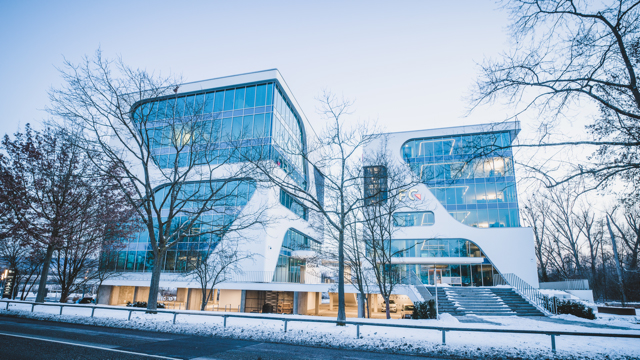
Consistent Corporate Design for Future-Oriented Engineering Company
The developer and user of this building ensemble, which is very prominently situated in close proximity to one of Germany’s busiest autobahns, is the Karlsruhe-based FC Gruppe. This engineering company, which has a payroll of more than 300, works both for Porsche and on innovative, future-oriented hospital concepts. In light of this, the intention in 3deluxe’s building design was to combine innovation, sustainability, efficiency, and a meaningful arrangement, so as to create a distinctive composition.
A cube offered the most economical ratio between outside surface and volume, thus representing the most efficient building shape from a sustainability viewpoint. The FC Group’s two identical cubes are twisted in opposite directions and stand on a large floating podium under which an open underground parking lot is located. Because of the striking, organically-shaped, story-spanning windows, the two individual cubes merge, depending on perspective, to produce a sculptural overall effect with a varying, charming appearance.
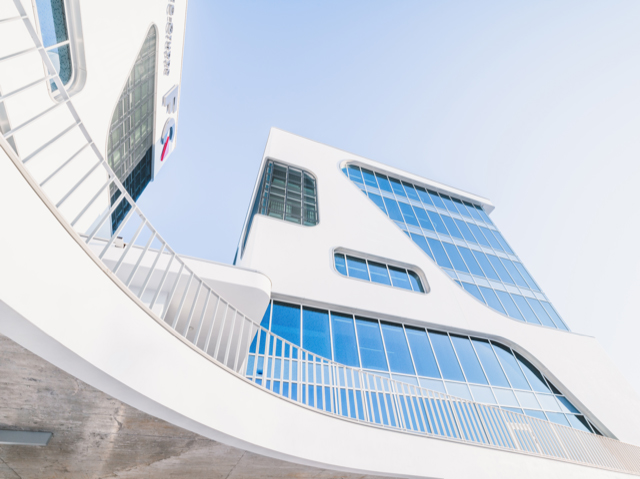
The Building’s Inner Workings: Smart, Digital, Convenient
The office stories have a generous, open concept used largely rejects the idea of internal walls. The structure of the building invites a cooperative, non-hierarchical approach to work. Communicative shared spaces and areas for focused work unobtrusively alternate with one another and the offices are fitted out with furniture that is appropriate to its urban context. The concept of a paperless office allows for light, transparent furnishings and views of what is happening outside that are largely unimpeded. Thanks to an app specially designed by the developers, staff can control pretty well everything in the building. They can select their lunches from the in-house food bar or allow themselves to be guided through the surrounding park areas in their breaks.
To avoid plastic, water is provided from the well on the grounds, while the carpet is made of recycled fishing nets and plastic bottles. Modern heated and chilled ceilings ensure a pleasant ambient temperature in the offices. Cooling and heating are provided from a geothermal source that uses 24 probes that run to a depth of 130 meters and electricity is generated by a PV system on the roof, meaning that the building requires zero outside energy.
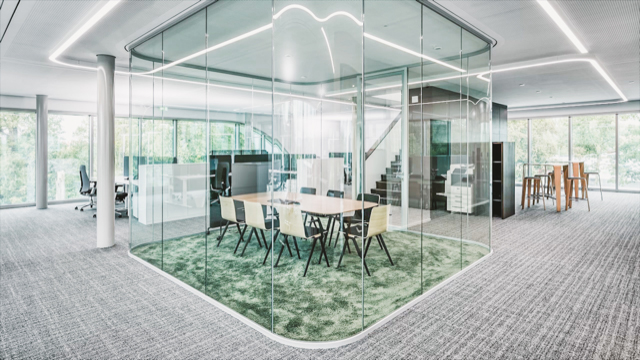
Nature and the Protection of Endangered Species between a Commercial Park and the Autobahn
The FC Campus building is situated in a semi-natural environment, between an industrial park, the autobahn feeder road, and a small tree and meadow biotope with a little stream, an environment very much deserving of protection. The architecture has adopted a circumspect approach to this residual natural environment. In order to avoid birds crashing into the generous glazing which stretches around corners the architect in cooperation with the Swiss ornithological station, Sempach came up with the kind of delicate, semitransparent pattern printed onto the glazing of which birds would be aware but which would not, at the same time, spoil the view.
The outside lighting was designed to take the form of insect-friendly LED lights with a low beam height and focused lighting on the surfaces, without light emission into the surroundings. The decision was taken not to install scenic lighting on the vegetation or the building shell. Throughout the entire site and in the open underground parking lot underneath the building’s floating base plate sealed areas have been reduced to a minimum, which means the roadways and the footpaths.